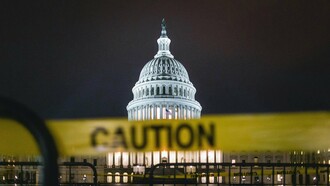According to a recent analysis from Nira Data’s Democracy Perception Index, for the first time ever, China is viewed more positively around the world than the United States in 75 out of 100 nations surveyed. This is the first time this phenomenon has been recorded. Most of these nations were in the sub-Saharan and the Middle East and North Africa regions. It does not have to be this way. While many in the mainstream media present the United States as throwing away its leadership in global affairs, I feel that China, too, is leaving its own influence gap that is providing the US with a unique opportunity to maintain and improve its role as the global economic and political leader.
China’s Belt and Road Initiative, the CCP’s flagship strategy for expanding China’s global influence, is starting to show cracks. And, rather than spend trillions on defense, bogging us down in endless wars–arguably one of the biggest blunders of US foreign policy in the last 25 years–the United States needs to shift its focus.
The most notable example of this was the case of Afghanistan, which, after our 2001 invasion, we spent 1.2 trillion dollars on trying to reform Afghanistan into a Western-style democracy and government that quite literally collapsed during our military withdrawal! Simply put, while we spent trillions on costly conflicts, China has been incrementally strengthening its economic and cultural presence in the developing world and is now the largest trading partner with 120 countries, mostly thanks to its Belt and Road Initiative. America is at a strategic crossroads: any administration, Republican or Democrat, should recognize, as a matter of urgency, the need to compete with China's Belt and Road Initiative by providing its own alternative, as this is a matter of economic and national security. Global leadership is not merely defined by one's ability to carry out air strikes or troop deployments anywhere in the world, but rather to provide the means to poorer countries to economically develop.
China’s BRI
First and foremost, China’s Belt and Road Initiative (BRI) is China’s first real attempt at establishing itself and the CCP as a viable alternative to the United States. In addition, China wants to rebrand its reputation. From the bygone days of Mao Zedong and extreme poverty, China is trying to brand itself as a wealthy financial powerhouse that can offer an alternative path for developing nations that do not necessarily abide by the Western rules-based international order. By offering significant sums of money via investments in energy, industry, and other key sectors, China seeks to gain strong economic and cultural footholds in countries over the United States. These economic and cultural footholds include access to markets for Chinese goods, internationalizing the Renminbi currency, strengthening Chinese logistical hubs, advancing its own interpretation of international law, and offering alternatives to Western institutions, such as the IMF, with its own financial institutions, such as the Asian Infrastructure Investment Bank. With this diplomatic approach, China seeks to effectively buy friends with its checkbook, and it appears to be working.
Countries that accept BRI packages are significantly more likely to drop sovereign recognition of Taiwan. For example, China has been able to successfully leverage its diplomatic and financial influence to convince several nations, such as Panama, the Solomon Islands, the Dominican Republic, and more to drop recognition of Taiwan in exchange for aid. China’s views of international law directly contradict the United States' interpretation of its rules-based international order, which emphasizes a policy of non-interference and selective interpretation of international law. This worldview extends to the BRI, China’s policy of non-interference, meaning nations don’t have to implement any social or institutional reforms in exchange for aid, which empowers authoritarian leaders rather than weakening them. This has been shown to exacerbate human rights abuses in BRI infrastructural projects and shield authoritarian regimes, paving the way for those regimes to align their governance practices with China’s practices.
Chinese state-owned enterprises will often embark on expensive and inferior quality infrastructural work in developing nations. One recent example is Serbia’s collapsed Novi Sad train station, built by Chinese state-owned firms, killing 16 and sparking widespread fury in the nation. Or a dam in Ecuador, which had 17,000 cracks in its structure upon completion. Various other projects in countries such as Angola or Pakistan have seen costly infrastructure already require major repairs just a few years after its completion. In Sri Lanka, its Hambantota port has failed to generate sufficient revenue, leading to a Chinese takeover of the port, while its Mattala Rajapaska International Airport, also built with Chinese money, is often deemed the world's emptiest. These are just a few examples of many other documented instances of BRI infrastructural shortcomings.
In the case of China’s Digital Silk Road Program, Chinese companies have pursued aggressive investments in the communication and IT sector in BRI recipient nations. While done in the name of digitization and modernization, in reality, this is viewed by many to covertly export China’s digital surveillance and censorship infrastructure to many BRI nations. In fact, 63 countries have received AI surveillance technology from Chinese tech companies. These surveillance programs can easily erode civil liberties or any potential dissent against governments across the world. This highlights that the BRI is not merely an infrastructure-based program, but rather, a program that is designed to export China’s governance model to developing regions with young populations and high growth potential.
Lastly, dozens of Belt and Road recipient nations, such as Sri Lanka and Kenya, to name a few, have seen a rise in their debt level, reaching the point of being considered debt-distressed. In 2025 alone, 35 billion dollars will be owed to China, 22 billion of which comes from 75 of the world’s poorest nations. In fact, China is now the largest creditor nation to developing nations, and as it becomes increasingly clear that these nations are unable to pay back China, this is forcing China to recall the debt it is owed. Coupled with its shoddy infrastructural projects, this threatens to undermine any of the progress that has supposedly been made by its BRI. With China’s BRI policy showing economic and infrastructural cracks, this opens up an avenue for the United States to regain its economic and cultural influence in developing markets around the world.
Limitations in current American development programs
The United States has programs such as the Millennium Challenge Corporation (MCC), which focuses on sustainable growth and poverty reduction. The MCC’s grants are time-limited and small in scale, yet they could potentially lead to concentrated and focused efforts at poverty alleviation within specific regions of nations, but this is not the case. The MCC’s selection criteria are notoriously strict, with only ⅓ of nations–28 out of 81– would even qualify, discouraging many to apply, while encouraging many to look to China for aid. In addition, MCC programs often fizzle out once the MCC exits a host country and its time-limited grant expires, which further undermines their supposed sustainability. Ironically, the MCC seeks to improve governance and other institutional indicators, yet also requires that they are already in good governance. But perhaps, maybe the MCC is not meant to be America’s answer to the BRI, so let's look at another program led by the US and wider G7, often hailed as the West’s answer to the BRI.
The Partnership for Global Infrastructure and Investment (PGII), a program launched in 2022 with over 600 billion USD in pledged funding, is meant to be similar in nature to the BRI. However, ever since its inception, the PGII has been mired in bureaucracy and lacks real global branding that the BRI has managed to achieve. Details of the PGII remain lacking, and the 600 billion dollar pledge has yet to be fulfilled 3 years on. Project rollouts are slow and fragmented without central coordination, making the program unattractive to private investors who otherwise would potentially be willing to co-finance many of them. It's because of this lack of organization and complexity that has dissuaded many countries, even democratic ones, from signing onto a G7/American-led aid package. While these programs are good first steps, more concerted action and political will are needed to make these programs more effective and responsive to the needs of many nations.
An American BRI?
So, what could an American alternative to the BRI look like? What I propose is a whole new approach for how the US carries out its aid and economic development policy if the US is to better compete. While current developing nations' institutions are certainly not perfect, and an American BRI should encourage modernization and reformation of government bodies, efforts to implement institutional reforms that would theoretically Westernize a country’s institutions often fail. Why? Because they are simply too expensive to maintain once the aid dries up, and are often viewed with deep distrust by both local elites and the general public. At the same time, the abruptness in its implementation leads to a chaotic and lackluster transition that inevitably collapses. This forms long-term dependencies on wealthy nations' aid while keeping many developing nations entrapped in the poverty cycle.
An American BRI program should instead focus on preserving current market mechanisms while slowly integrating institutional reforms into policymaking, social programs, and business practices, thus reducing red tape and fostering competitive industries, along with investing in vital high quality infrastructural projects. In essence, improve the institution to better fit current market needs and local population, rather than change the underlying functioning of a country’s economy and its institutions. These institutions and markets get better as incomes rise and technology is further embraced by the general populace. This gradually furthers institutional competence within existing markets, which are tailored to local economies, making them more productive rather than utilizing a one-size-fits-all approach.
This can inevitably result in institutions that are more mature and able to meet the needs of the people without extensive reliance on outside help. Ultimately, such an approach can result in wealth accumulation for ordinary citizens and slowly but surely ensure a democratization of once authoritarian countries. How, you might ask? Because, unlike the Chinese BRI, which does not encourage democratization, an American BRI should tie gradual institutional maturation to a process of democratization. Performance metrics and annual evaluations would be necessary to measure progress within the framework of agreed-upon goals and commitments between both parties. Countries that agree to an American BRI would commit to gradually democratizing their institutions under extended timelines as a means to build trust with local populations rather than engage in forced and abrupt democratization. Even if it is not complete democratization, free and fair elections at lower levels of governance can instill a sense of participation and civic values amongst a country’s citizenry. A bottom-up approach can create a foundation for future reforms.
The United States can leverage its technical expertise and comparative advantage to develop economic sectors. America has some of the wealthiest corporations in the world, with some of the best universities and a most talented pool of researchers. An emphasis should be placed on not just setting up offices or creating mines but by upskilling local workforces, technology transfers–provided the technology is not too sensitive–and educational partnerships, which can work to build lasting institutional capacity. Funding would not just come straight out of American tax coffers but rather be funded jointly by several different actors, such as universities, financial institutions, and international organizations. Utilizing partnerships and cross-border collaborations in the context of development and poverty alleviation can culminate in forming bilateral economic and defense partnerships that are based on mutual respect.
An American BRI can leverage these comparative advantages to design tailored solutions to local problems and shortages in collaboration with local players. This does serve American interests because it maintains a strong diplomatic and economic presence in many developing regions around the world. A strong America needs to have allies, not just with ageing wealthy nations but with nations that have high-growth potential economies with young, productive workforces. The reason for this is that it is undoubtedly clear to me that rapidly growing developing nations will determine 21st-century power dynamics as incomes rise and wealth slowly accumulates amongst young labor forces. In addition, developing nations are slowly but surely producing more and more highly educated graduates as university education expands. America cannot afford to miss out on these opportunities for potential collaboration.
Concluding statements
All in all, the United States has been neglecting its influence in several vital developing regions around the world, such as Sub-Saharan Africa and South East Asian over the last 25 years. China has since taken advantage of this with its BRI as a means to compete with US economic and political hegemony; however, its program too has major flaws. The window of opportunity for the United States is rapidly narrowing for us to take advantage and offer a viable and competitive alternative. What I propose is a hypothetical response to this gap in strategy concerning the United States’s outreach to developing nations around the world. Not only does this serve the US government's interests as it works to align several strategic nations with America’s world view, but it also serves the interests of the American businesses and consumers by engaging with high-growth potential economies.















